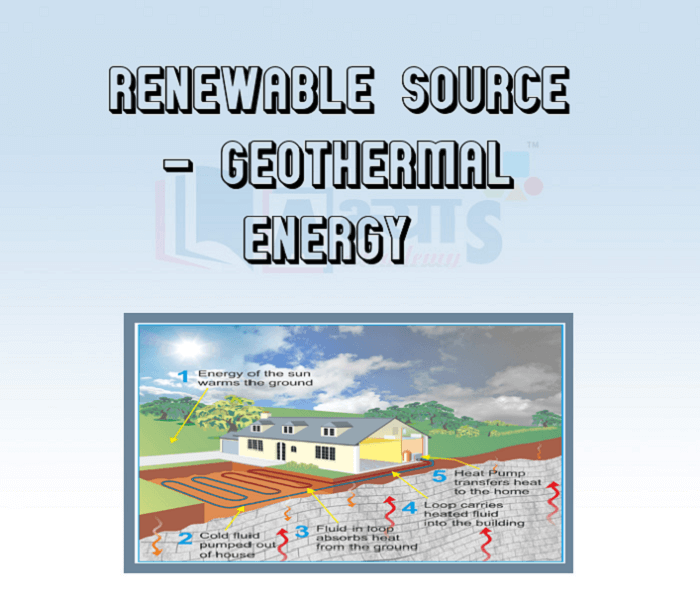Renewable Source - Geothermal Energy


Renewable Source - Geothermal Energy
Renewable Source - Geothermal Energy: Geothermal energy is the energy obtained from the heat of the earth. Geothermal energy does not depend directly or indirectly on solar energy. The interior region of the earth below its crust is very hot and it consists of molten rocks called 'magma'. Magma is in semi-solid state. The geological changes push this semi-liquid magma towards upper surface and it gets collected at some depth below the surface of the earth. These places are called 'hot spots'
Hot spots are considered as the sources of geothermal energy. When the underground water comes in contact with such hot spots, it turns into steam which is trapped in the space between rocks and becomes compressed due to high pressure. This steam can be collected by introducing pipes after drilling holes. These pipes reach up to the depth of hot spots. The steam coming up through the pipes can be used to run turbines. Sometimes the steam finds its way throngh the cracks in the crust and comes up to the surface in the form of geysers. The steam from such geysers has the temperature of about 150 -200°C. Geothermal energy is am co-mendly source of energy and the cost of electricity generated from it is almost hair that of the electricity generated using conventional methods.
A large number of geysers are found in USA and New Zealand but we have limited places in India for geothermal energy. In Gujarat, we have geysers at places like Unai, Tulsi Shyam in Saurashtra, and geothermal energy. In Gujarat, we have geysers at places like Unai,Tulsi Shyam in Saurashtra, and Lasundra and Tuva villages in Godhra District.
Advantages:
1. This energy is available throughout the year.
2. The cost of production is comparatively low.
3. It is eco-friendly, i.e. pollution-free.
Students / Parents Reviews [10]
A marvelous experience with Abhyas. I am glad to share that my ward has achieved more than enough at the Ambala ABHYAS centre. Years have passed on and more and more he has gained. May the centre flourish and develop day by day by the grace of God.

Archit Segal
7thAbout Abhyas metholodology the teachers are very nice and hardworking toward students.The Centre Head Mrs Anu Sethi is also a brilliant teacher.Abhyas has taught me how to overcome problems and has always taken my doubts and suppoeted me.

Shreya Shrivastava
8thI have spent a wonderful time in Abhyas academy. It has made my reasoning more apt, English more stronger and Maths an interesting subject for me. It has given me a habbit of self studying

Yatharthi Sharma
10thAbhyas Methodology is very good. It is based on according to student and each child manages accordingly to its properly. Methodology has improved the abilities of students to shine them in future.

Manish Kumar
10thIt was good as the experience because as we had come here we had been improved in a such envirnment created here.Extra is taught which is beneficial for future.

Eshan Arora
8thBeing a parent, I saw my daughter improvement in her studies by seeing a good result in all day to day compititive exam TMO, NSO, IEO etc and as well as studies. I have got a fruitful result from my daughter.

Prisha Gupta
8thMy experience with Abhyas academy is very good. I did not think that my every subject coming here will be so strong. The main thing is that the online tests had made me learn here more things.

Hiya Gupta
8thMy experience with Abhyas is very good. I have learnt many things here like vedic maths and reasoning also. Teachers here first take our doubts and then there are assignments to verify our weak points.

Shivam Rana
7thIt has a great methodology. Students here can get analysis to their test quickly.We can learn easily through PPTs and the testing methods are good. We know that where we have to practice

Barkha Arora
10thOne of the best institutes to develope a child interest in studies.Provides SST and English knowledge also unlike other institutes. Teachers are co operative and friendly online tests andPPT develope practical knowledge also.
